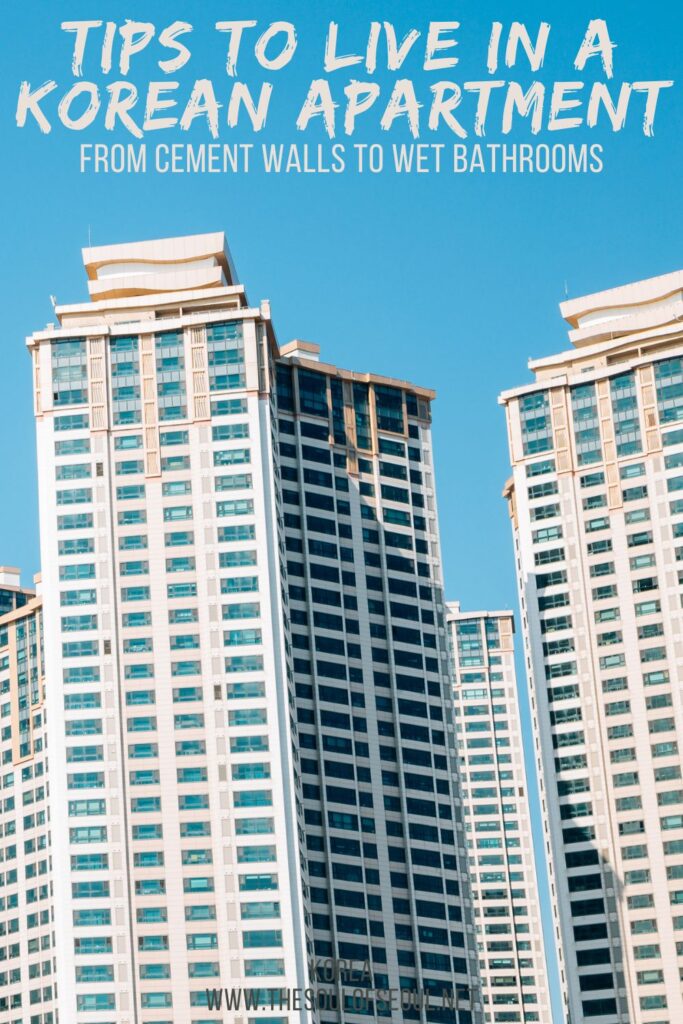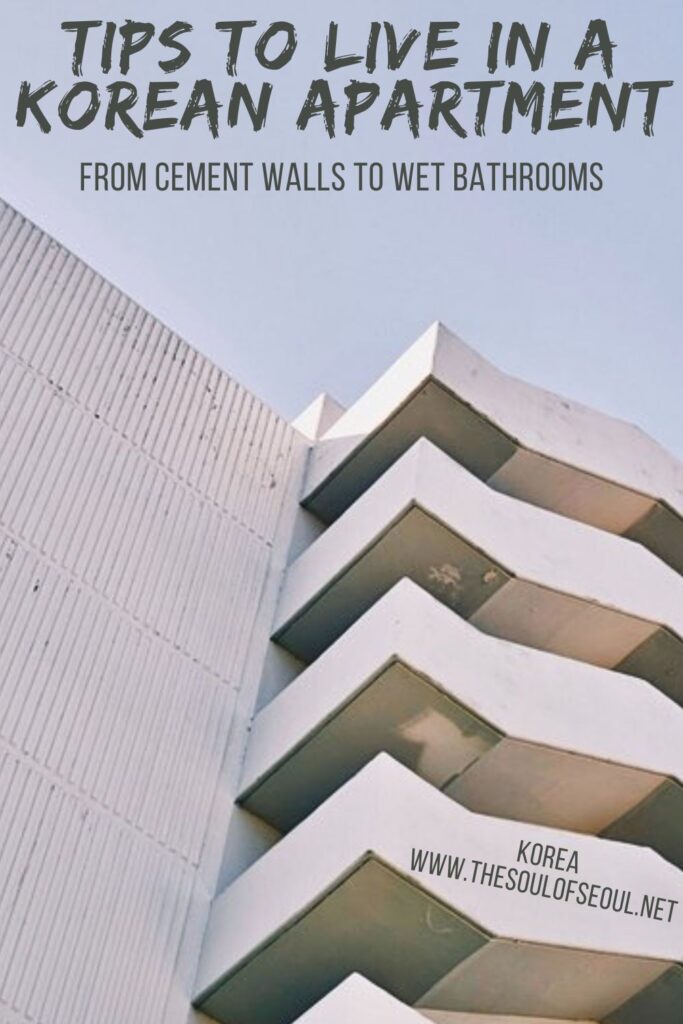What To Know About Living In A Korean Apartment: Tips, Tricks, and More
Last Updated on April 10, 2024
Are you moving to a Korean apartment and feeling a bit overwhelmed at the prospect? Wonder what is’ like to live in a Korean apartment? I’ve lived in Korea for more than 15 years in everything from an apartment and an officetel to a villa. Don’t know the difference yet? No worries. I’ve got you covered.
Keep reading to get some essential tips to apartment living in South Korea from how to hang things on cement walls to what to know about wet bathrooms, here’s what you need to know.
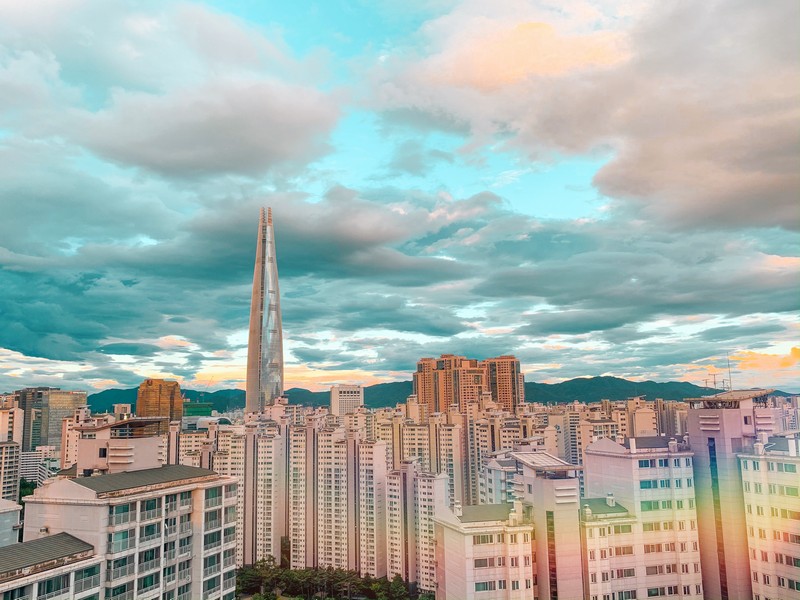
Are you moving to Korea? There’s a lot to know about the place, but there’s a lot to know about your home away from home too. Here are some tips for your Korean apartment.. or is it a villa? You’ll see.
- Are Korean apartments small?
- What are apartments called in Korean?
- How many floors are Korean apartments?
- Do Korean apartments have keys?
- Tips for living in a Korean apartment
- Embrace the cement walls
- Prepare for high humidity
- Create a shoe-free home
- Get ready for a “wet” bathroom
- Be mindful of noise levels
- Separate your recyclables
- Utilize the floor heating system (ondol “온돌”)
- Adjust to smaller living spaces
- Get ready to hang dry your clothes
- Adapt to apartment security systems
- Stay informed about emergency procedures
- You might not be buddies with your neighbor
(This post contains affiliate links, which means I receive a certain percentage of a sale if you purchase after clicking at no cost to you. Thank you for your support.)
Are Korean apartments small?
If you’re coming from the States where a lot of people are living in the suburbs and have plenty of space to spare, yes, you will find that Korean homes are comparatively smaller. You can absolutely find larger places, but expect to pay a lot of money for it. I had just come from living in a college dorm in the US, so I found the living spaces larger than what I just come from in that regard though.
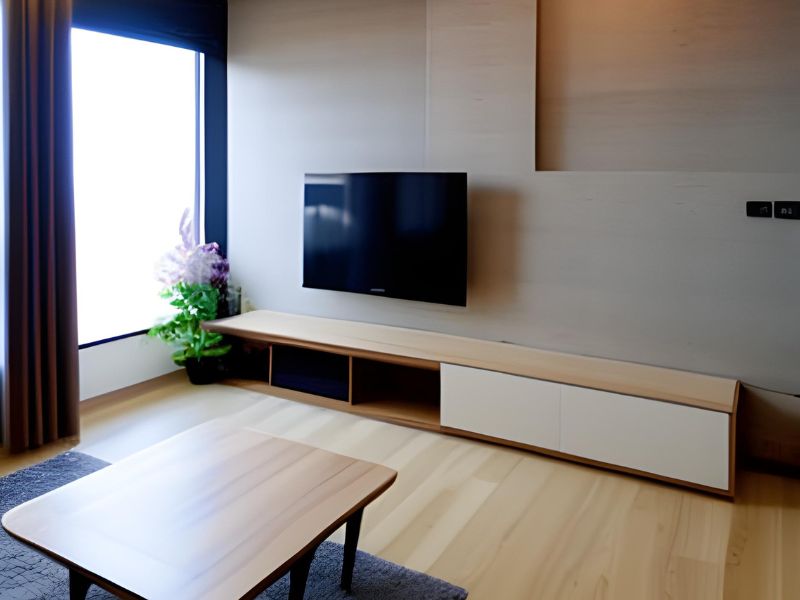
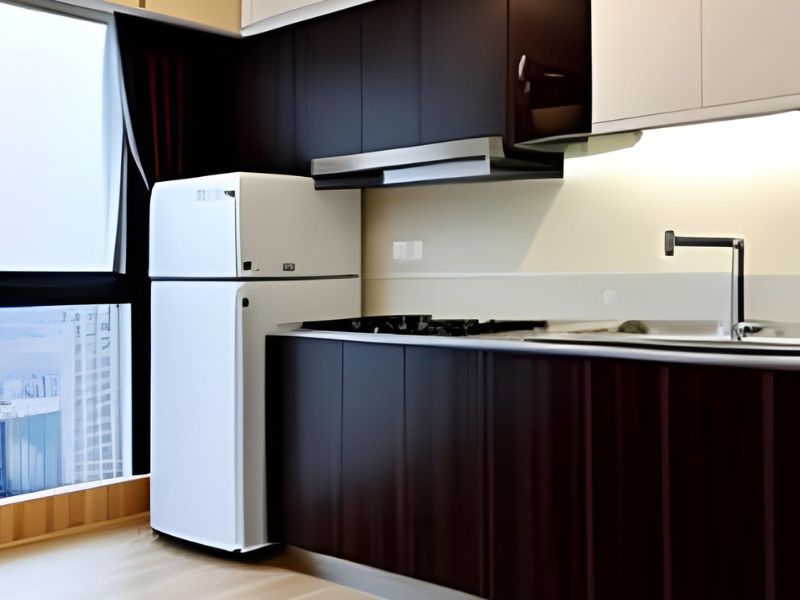
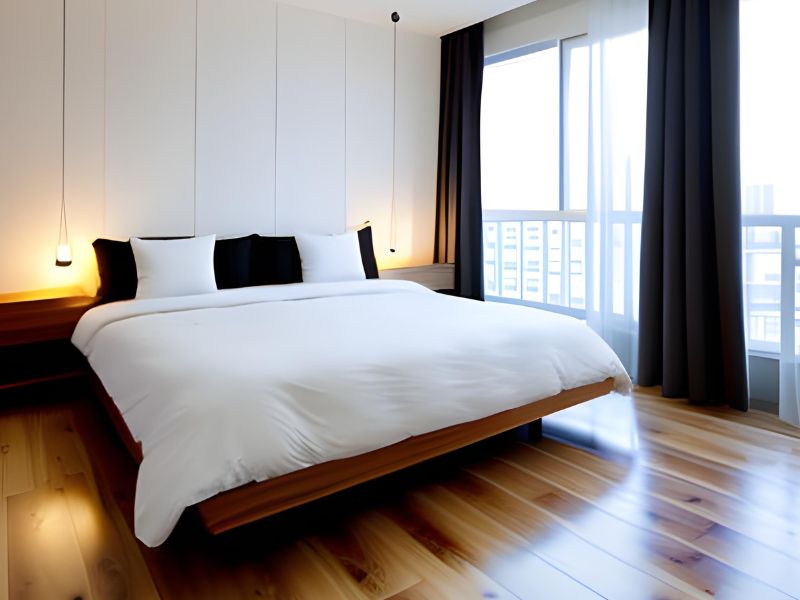
What are apartments called in Korean?
Good question. While there is a word for apartment, 아파트 “apateu”, that might not be what Koreans would say you’re living in. Here are the main differences and what to call your type of housing in Korean.
- Apartment or 아파트 “apateu”: Usually apartments are used when referring to complexes of buildings with anywhere from 4 to 15 buildings which have more than 15 floors each. Owned by huge companies, the price is set by the name on the side of the building. The buildings in these complexes all look the same and the only thing that differentiates them is a number or character on the side. When you first arrive, make sure you know which building is yours, or you could easily lose yourself in a sea of same buildings when you exit.
- Officetel or 오피스텔 “opiseutel”: These look similar to apartments from the outside. The name is a combination of office and hotel and these usually come furnished with the bare essentials already like built in washing machines, kitchenettes, table for dining and even beds. This is the main difference from apartments that are usually unfurnished. Originally intended for small office spaces, these are popular for single people that don’t need much space but want some amenities.
- Villa or 빌라 “billa”: If you’re not in an apartment or officetel, you’re probably in a villa. These tend to be smaller single apartment buildings that are under 5 floors. Often they don’t have elevators, but the last one we lived in did luckily since we were on the top floor. These usually have only 1 or 2 residences per floor. These tend to be less desirable because they’re not huge branded apartment complexes, but you can actually get villas that are bigger in size for less money than apartments.
How many floors are Korean apartments?
More than 80% of the Korean population lives in apartment buildings that range in size from 5 floors to 35 floors!

Do Korean apartments come furnished?
Not usually. I noticed in some other articles that people claimed apartments in Korea come furnished so you don’t need to buy furniture. This just isn’t true. Yes, if you’ve come to Korea to teach English and your school has provided you housing, it will be furnished. You’ll notice that is established in your teaching contract usually. They provide the basic necessities like a bed, table, closet perhaps. The apartment didn’t come furnished though. It was empty and the school is providing those things.
If you’re getting your own apartment, which I recommend, then it won’t be furnished. Be prepared to figure out the furniture. You can easily shop online for most furniture needs. Check out Modern House, Hanssem Mall, or of course IKEA.
Do Korean apartments have keys?
Not usually. I think only my first apartment back in 2006 had keys. Since then, all of them, even in the villas, have been adapted to have smart locks. Instead of using a physical key, you just memorize a code and input it into a keypad on the door when you want to enter.
You can and should set your own code when you move into your new Korean apartment so that it’s yours and yours alone.
Tips for living in a Korean apartment
1 Embrace the cement walls
You probably tried and failed to hang something on your wall by now. Most Korean buildings, the new ones at least, are built with cement. Unlike the States, where I’m from, where you can just bang in a nail in a few swings and hang and be on your way, to hang anything on the wall here takes a drill and a lot of effort.
As many Korean apartments have cement walls, it’s important to find alternative ways to hang decorations.


How to hang things on walls in Korean apartments
The best option is drilling if you really want to get something good and strong hung on the wall. This is unfortunately not a good option if you’re renting and want to get your deposit back. Anyone else fill their college dorm room holes with toothpaste when they left? Use removable adhesive hooks or specialized adhesive strips designed for non-damage wall mounting.
One of the best things to use if you want to hang anything on the wall is 3M Command Strips. Whether you’re looking to hang pictures, tapestries, or pin boards to add a little touch of décor, this is definitely the way to go.
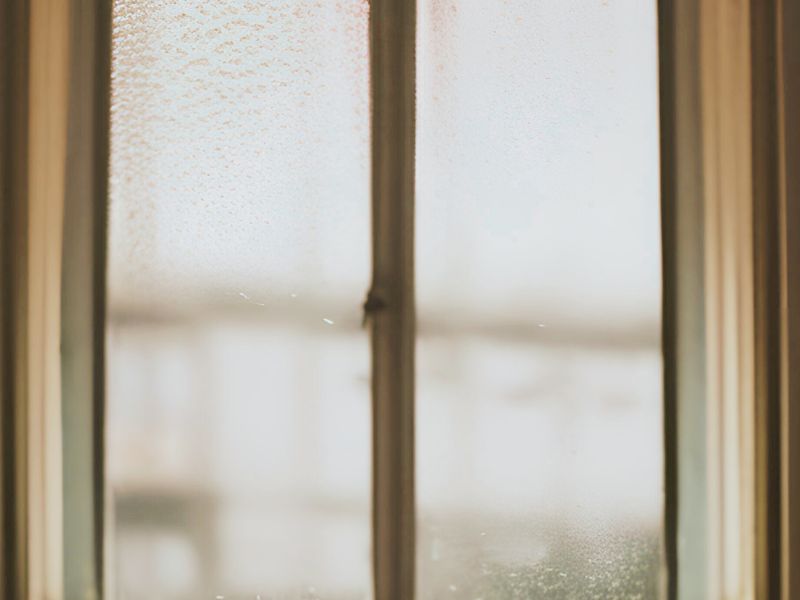
2 Prepare for high humidity
High humidity can cause mold in your house VERY QUICKLY. I don’t want to exaggerate, but I also don’t want anyone to end up with mold on their walls. You should open your windows every day year round in Korea. It may seem counterintuitive at times, like when there are high levels of fine dust, but is a necessity.
Additionally, you might invest in a dehumidifier to combat the high humidity levels, especially during the summer months. The biggest mistake people make though, is not airing out their homes to balance the humidity inside and out. After you shower, open the windows. When you awake in the morning, open the windows. If you start to see condensation on your windows, that means you need to open them.
Proper ventilation and opening windows daily is the best deterrent to mold brought on by humidity.

3 Create a shoe-free home
Follow the Korean tradition of removing shoes at the entrance. Korea is already dusty and streets can be dirty so you don’t want to track it into your homes. On top of that, because there is floor heating, you might want to sit on your floor a bit more than you’re used to.
Have slippers or indoor shoes available for guests and yourself if you’re uncomfortable with the sock walk.
Tip: If your shoes are smelling up the place, head to the market and look out for the wardrobe deodorizers, or 옷장 탈취제 “otjang talchuijae”.
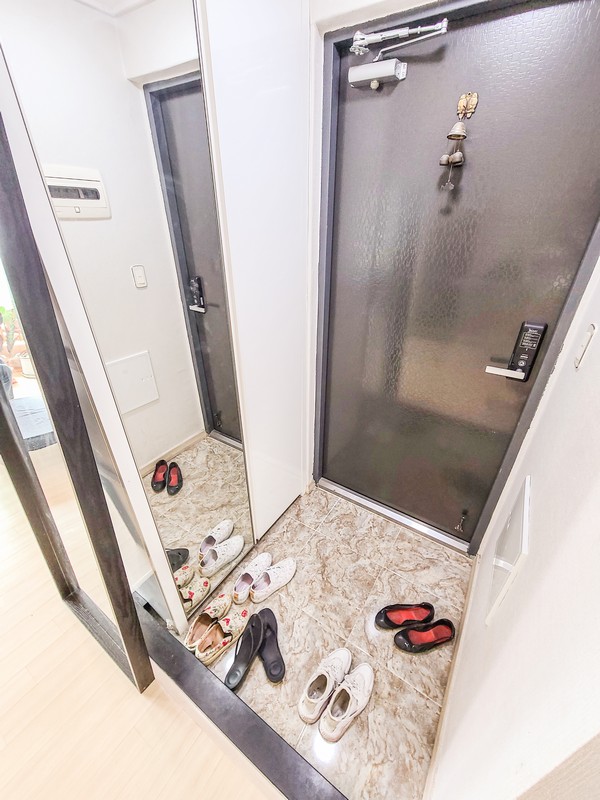

4 Get ready for a “wet” bathroom
Another reason you shouldn’t be wearing shoes in your house and definitely not in your bathroom is because Korean homes have what is known as a wet bathroom. This means that the entire space from top to bottom can and probably will get wet. There’s a drain on the floor and usually a lip on the door so that water won’t go out into the main living space or bedroom.
This makes cleaning the bathroom SUPER easy. It’s something to get used to. Also, don’t be surprised if your shower head is actually attached to your sink. There is a knob to change from sink to shower and you’ll want to pay close attention. There are plenty of people who forget after getting dressed for work and walk in to wash hands or something and end up drenched.
You might also notice that your bathroom doesn’t have a bathtub… but is big enough for one. Why didn’t they just install a bathtub to begin with? Not to worry, while not the most aesthetic, you can buy large plastic “tubs”. If you have a child like I do, it might just become a necessity. They’re budget friendly though and you can buy them easily online so you don’t even have to carry it down the street.
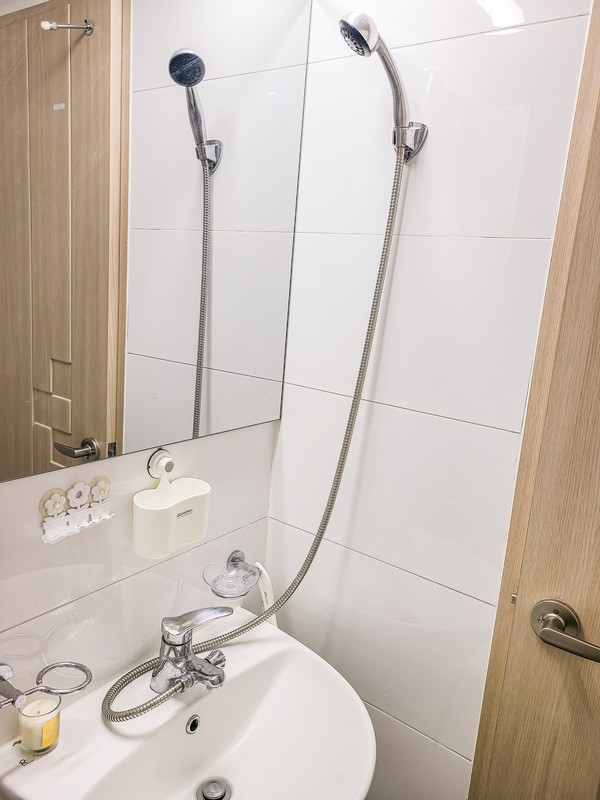


Tip 1: Get bathroom slippers. You can find them in the bathroom aisle at every market. These are rubber/plastic slippers so if you want to step into the bathroom after you’ve showered and dried off, you don’t have to get your feet wet again.
Tip 2: A lot of foreigners that come to Korea have an issue with the hard water which causes their hair to fall out. It’s one of the biggest complaints by women in Korea in the FB groups. Be sure to purchase a shower head filter as soon as you get here. Your hair will thank you.
5 Be mindful of noise levels
Korean apartments can be tightly packed, so try to be considerate of your neighbors by keeping noise levels down, especially during late evenings and early mornings.
Some apartments have rules and some don’t. My Korean husband has said that the general etiquette is to not run the washer after 9:00pm or before 8:00am. We’ve been lucky to live in apartments that were well insulated and we didn’t have sound issues, but beware of apartments with thin walls. No matter what you do, there would be noise and some people don’t live well like that.
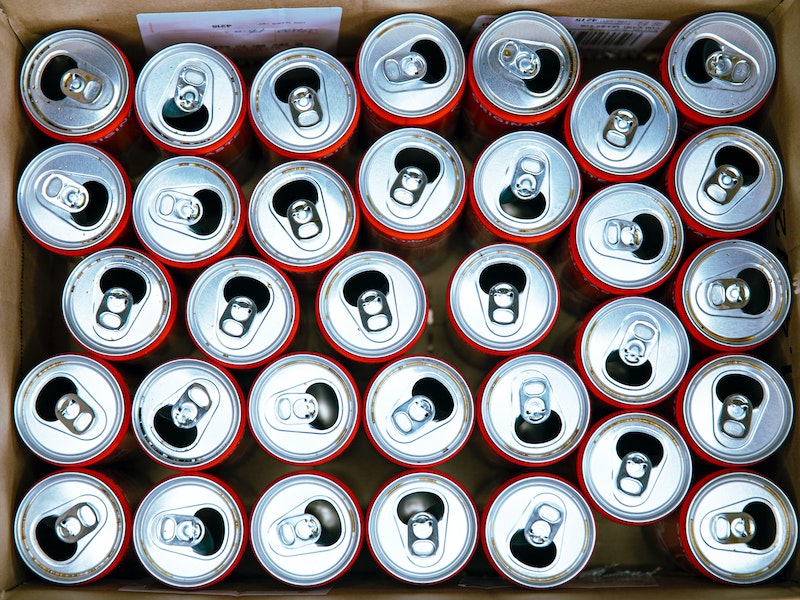
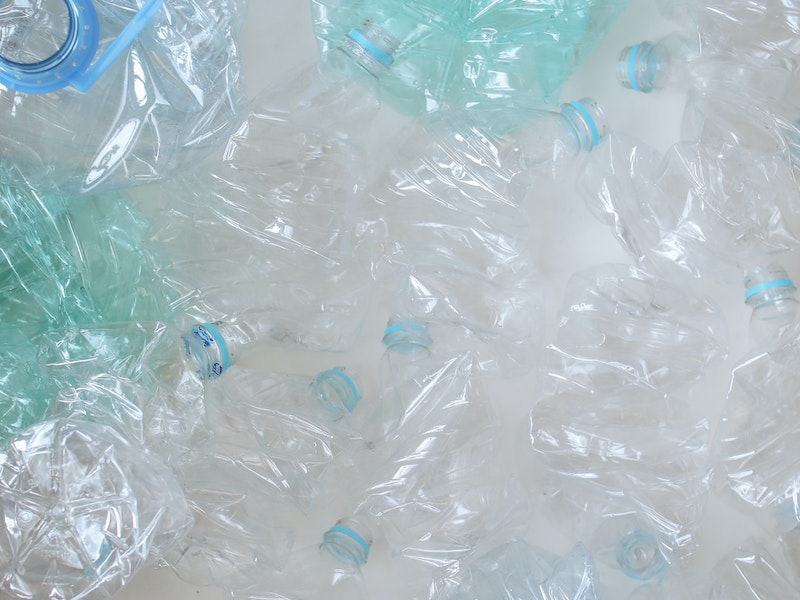
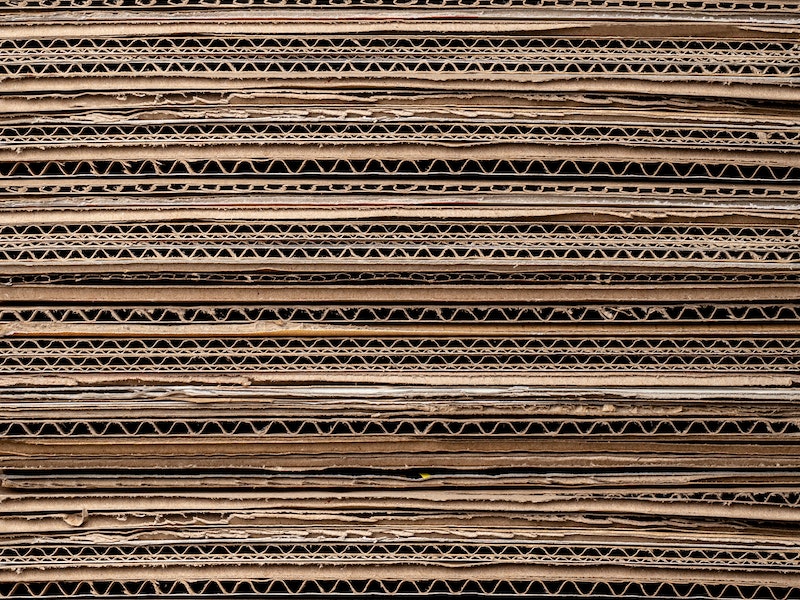
6 Separate your recyclables
Learn about the recycling system in your neighborhood and sort your trash accordingly. Recycling bins are usually located in the basement or designated areas on your street or in your neighborhood. It’s best to have a system in your home for separating the trashy goods. It will make your life much easier.
Along with recycling, make sure you get the right trash bags for throwing things out. There are trash bags specific to every city and district and if you use the wrong one, you can be fined. Read this guide to trash in Korea for a whole lot more information on what to throw away, where to put it, and how.
Trash vocabulary to know:
- 일반 쓰레기: This is the general waste. Things that cannot be recycled.
- 일반 쓰레기 봉투: This is the general waste bag and you should purchase them at a market or convenience store near your house as these will be for your area. On the note of markets and grocery stores in your area, usually if you request a bag to carry your groceries, these bags also double as trash bags in your local area.
- 음식물 쓰레기: This is your food trash.
- 음식물 쓰레기 봉투: These are bags specifically for your food trash which should be thrown away separately from your recyclables and general waste that can’t be recycled.
- 재활용품: recyclables
- 유리병류: glass trash (this would be in the recycle center of your apartment or outside your villa somewhere usually)
- 플라스틱류: plastic trash (this would be in the recycle center of your apartment or outside your villa somewhere usually)
- 금속및캔류: metals and can trash (this would be in the recycle center of your apartment or outside your villa somewhere usually)
- 대형페기물: large trash items.
7 Utilize the floor heating system (ondol “온돌”)
Korean apartments commonly feature ondol, a traditional floor heating system rather than a central heating system that you probably have in the US. I say commonly because if you’re a military family and will live on base in Korea, I’m not exactly sure if it’s the same as those buildings would have been built in more American styles. Outside of that, you will have ondol heating. Enjoy the floor.
Some people even find it nice to lay out their outfit for the next day on the floor in the wintertime so when they awake, their clothes and socks are nice and toasty. Do with that tip what you will.
The ondol system is usually also connected with the boiler and helps provide the hot water for the shower. The ondol system will have a control center on the wall somewhere in your home so you’ll want to make sure you understand how it works or you’ll end up with cold feet and cold showers. A lot of people will see an air conditioner in the ceiling or somewhere and think it’s dual action, but it’s not. Don’t make the mistake of turning that on and thinking you’ll heat up. They’re usually NOT dual heaters/air conditioners.
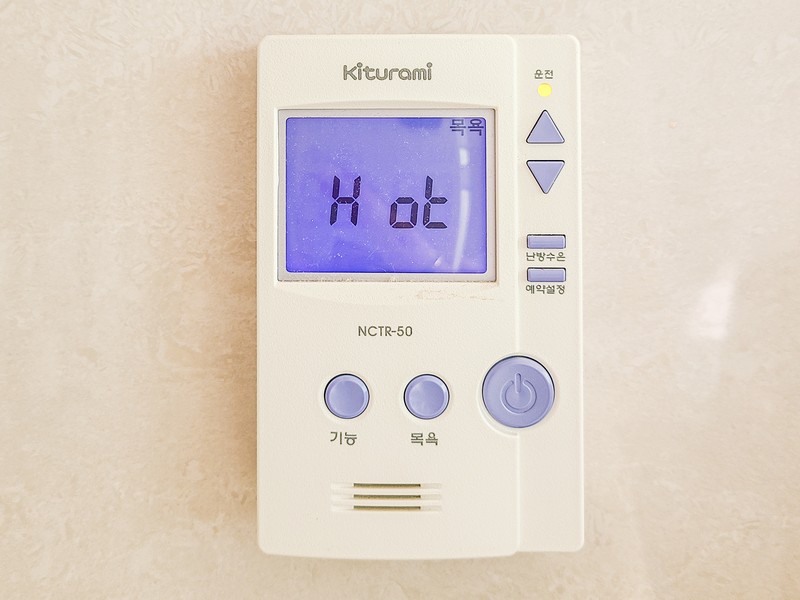
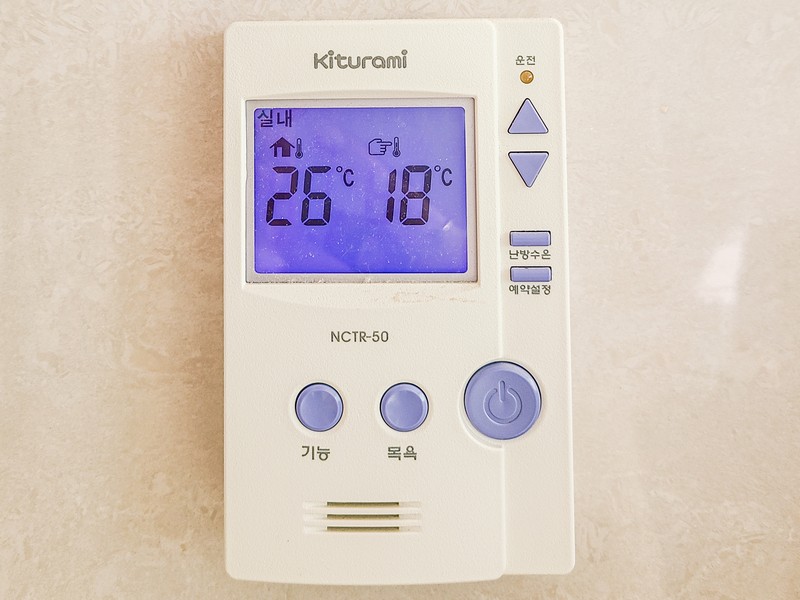
Ondol heating vocabulary to know:
- 전원: This is the on/off switch for the system.
- 온수전용: Hot water
- 난방/온수: water temperature control
- 목욕: shower
- 현재온도: current temperature
- 외출: away, set this when you’re headed out and don’t need it to work continuously.
- 예약: schedule, you can set the boiler to turn on a half hour before you’ll arrive home in the evenings from work if you don’t want to waste energy all day but want it warm when you get home
8 Adjust to smaller living spaces
Korean apartments are typically compact, so be mindful of your furniture choices and utilize space-saving storage solutions like under-bed storage or multi-functional furniture. If you’re coming from a stand alone house in the US, you’ll definitely find space lacking and you’ll definitely notice the lack of storage space. You can adjust though.
Koreans don’t often invite people over to their houses and you probably won’t either. In general, everyone meets each other outside so you just don’t need a ton of space.
As a personal aside though, I will say, don’t just say “yes” to any apartment because a realtor tells you that’s just how it is. When my husband and I first started looking for a home I only had a couple key requests, it should be bright (I like sunlight.), it needed to have a separate living space and dining space.
A lot eat at low tables and can use a kind of living room low table for that so the room can multifunction. I can sit on the floor, but not for all of my meals and not for all of my activities. I needed a place for a high table which wouldn’t work right in the middle of a living room obviously.
The realtor showed us a few houses that wouldn’t have room for both a couch and a dining table and said that’s just how Koreans live. I said, no, it’s certainly not. I’ve been here long enough to know I can get the space I want, you just have to show it to me. Korean realtors can be… pushy. And they may not listen to your needs. Just be strong, blunt, and stick to your guns. Spaces are small, but they’re not that small.
9 Get ready to hang dry your clothes
When I first got to Korea in 2006, I found that my apartment only had a washer and no dryer. The school attendant assigned to me said that Koreans usually hang dry their clothes. Over the years, more officetels and small apartments started getting dual washer/dryer machines installed. They take some getting used to, but work pretty well.
Korean apartments can be small so you just need to decide what the best way to use the space for you is. Hang drying really isn’t so bad.
Tip: To figure out all of the dials and options on your machine, use the app Papago, it’s better for translating Korean than Google.
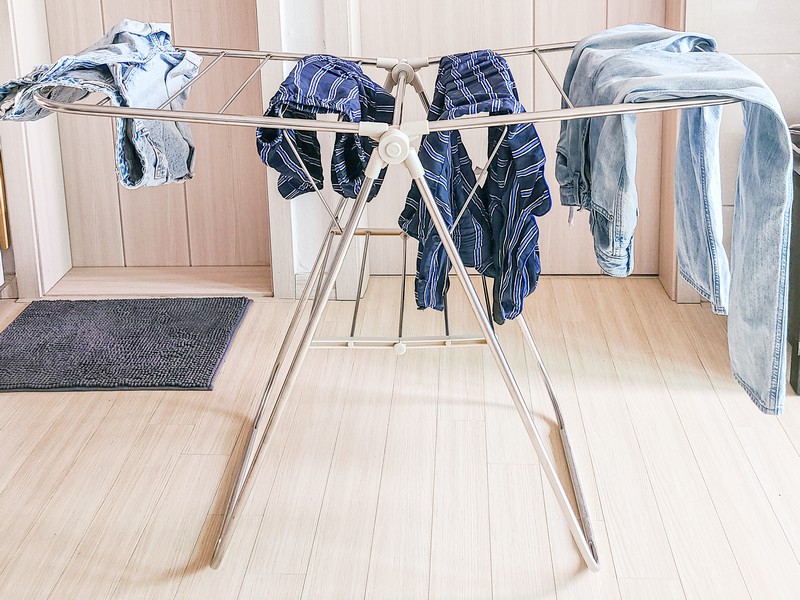
Laundry vocabulary to know:
- 세탁기: laundry machine
- 세탁: laundry
- 액체세제: liquid detergent
- 유연제: softener
- 표백제: bleach
- 전원: This is the on/off switch for the system.
- 온도: temperature
- 강: strong
- 중: normal
- 약: weak
- 표준: standard wash/dry cycle
- 헹굼: rinse cycle
- 건조: dry
- 삶음: boiling
- 급속: quick wash
- 란재리: lingerie or delicates
- 타월: towels
- 침구: bedding
- 커튼: curtains
- 이불: blankets/bedding
- 침구류: sheets/linens
- 니트: knitwear
- 탈수: spin dry
- 울: wool
- 문잠김: door lock
- 다리미판: ironing board
- 다리미: iron
- 옷걸이: hanger

10 Adapt to apartment security systems
Korean apartments often have security systems such as digital door locks or intercoms and to answer doors, you’ll often have a bell with a camera so you can see who is trying to get in. Familiarize yourself with their operation to ensure your safety.
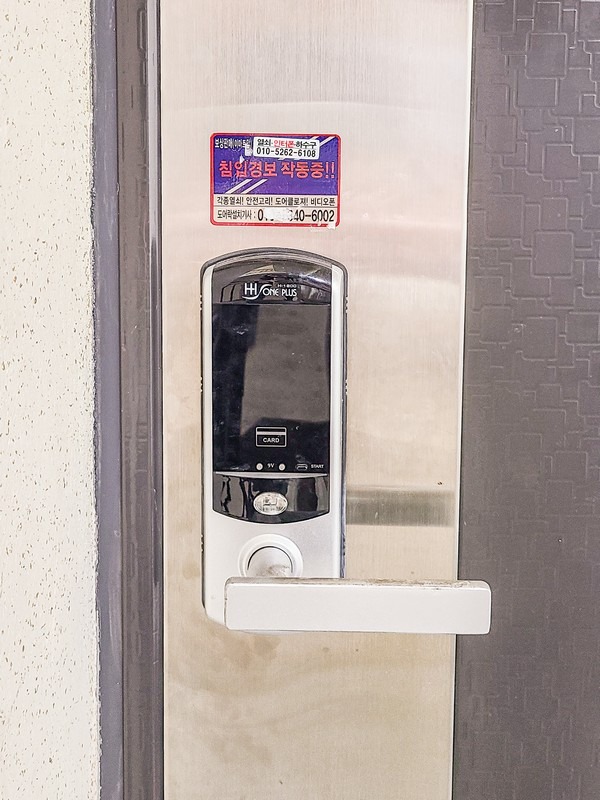
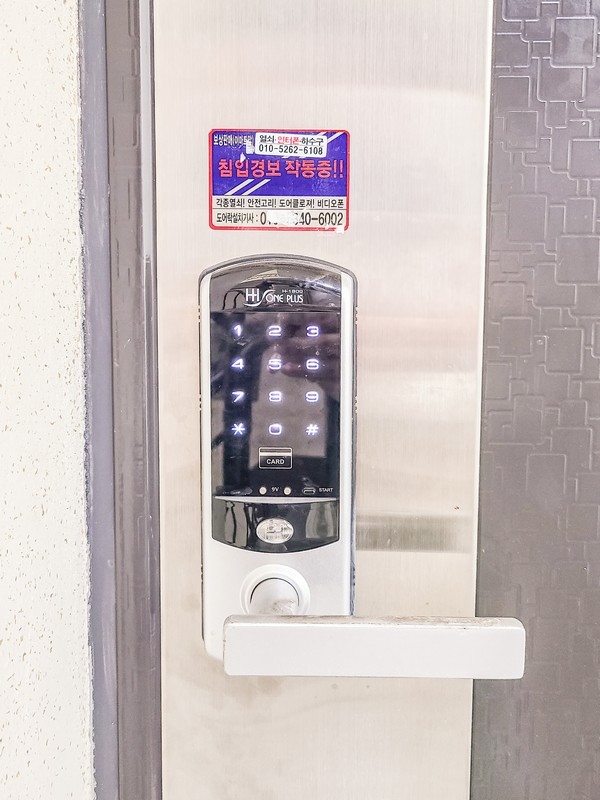
11 Stay informed about emergency procedures
Make sure you are aware of emergency protocols, including evacuation routes, emergency contact numbers, and any specific instructions provided by your apartment complex. These are often overlooked when people first move into a place but you’ll want to be aware of how everything works in your building and the vicinity.
12 You might not be buddies with your neighbor
In my first place (an apartment complex) and my second place (an officetel), I never even know my neighbors. We’d pass in the night or see each other in the elevators and maybe smile in acknowledgement.
With that said, ever after we’ve lived in villas and I’ve always had the best neighbors who we literally swap food with. They give me some kimchi or soup and I give them some fruits and rice cakes to say thank you. After my first villa living with this, I never wanted to go back to apartments despite what my Korean in-laws said or friends thought. As mentioned below, living in a name brand apartment is more respected and highly sought after, but I personally have enjoyed the community of villas more.
Tip: Take the time to learn some Korean. While I wouldn’t and probably would never say I’m fluent, I can definitely have plenty of conversations with my neighbors. Koreans can be quite shy to use English, afraid to make a mistake. But, you speak a bit of Korean and start the conversation and who knows? You might end up with an ahjumma sharing her side dishes and kimchi with you too.
Remember, embracing the uniqueness of Korean apartment living will make your experience more enjoyable and help you integrate into the local community.
Did you like this post? Pin iT!
